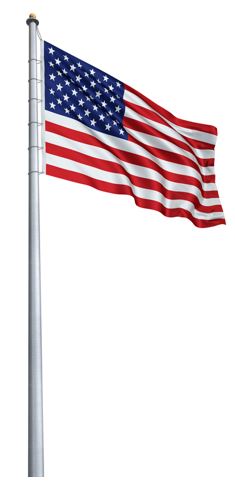When creating a website, many people just start creating pages without thinking about the most SEO-friendly site structure. In our “What is SEO?” post, we discussed how the navigation and folder structure of your website is essential for both usability and SEO. In this article, we’ll build upon those ideas as we explore the ins and outs of creating an SEO-friendly site structure.
AN SEO-Friendly Site Structure is Important for Usability
The structure of your website has a profound impact on the way users interact on your site. An overly complex or ambiguous navigational structure will most certainly frustrate your visitors and potentially cause them to leave your website. Instead, aim for a site structure that makes sense to your human users — after all, you want them to have a positive experience on your site!
AN SEO-Friendly Site Structure is Important FOR SEARCH ENGINES
In addition to human users, Google also relies on your site’s structure to help it understand your content and organize your pages. An SEO-friendly site structure helps search engines understand what your site is about or what you’re selling. The way you structure your site will give Google critical clues about where to find the most valuable content on your site so that it can find, index, and make it eligible for a higher ranking.
One way to build an SEO-friendly site structure is to think about how you organize blog posts or website pages on similar topics. For instance, we write a lot of blog posts about SEO, digital marketing, and website design. As a result, Google may not be able to tell which of these pages contains the most relevant content or is the most important to us. For Google to organize our site’s information, we need to make it clear which pages are the most important. An effective internal SEO-friendly site structure will do the trick.
How to set up the structure of your site
 When it comes to setting up the structure of your site, let us start by answering this question: If you were to build a brand-new website, how would you organize your content?
When it comes to setting up the structure of your site, let us start by answering this question: If you were to build a brand-new website, how would you organize your content?
The answer is to build a pyramid. At the top, you will find the homepage, which provides links to the most important pages. Think of those homepage links like Goldilocks — there shouldn’t be too many links, nor too few. You should have just the right amount. Too many, and nothing is important; too few, and you are not telling Google and your visitors what is important.
Then, each level down from the homepage will get exponentially more robust, just like each descending level of a pyramid grows wider. The second level of your site structure will contain main category pages, and sub-categories will be on the third level. Finally, place your individual posts and pages at the very bottom level. This level will house the most content, which is why it’s the widest – just like the bottom of a pyramid.
In addition to having a logical linking system in your homepage’s content, create a clear site-wide navigation structure that two main elements: the main menu and breadcrumbs.
Your website’s main navigation menu
A website’s main navigation menu helps visitors find content on your website. Visitors use this menu to navigate to your main products or services. The way that you structure the main navigation menu gives your audience valuable insight into your site’s products or services. It allows them to drill-down directly to the information they need.
Your website’s breadcrumb trail
We recommend that all but very small websites implement a breadcrumb navigation menu. Breadcrumbs are clickable links that are usually visible at the top of a page. They reflect the structure of your site, with each pyramid layer represented by a breadcrumb in the trail. Breadcrumbs help visitors figure out where they are on your site and provide easy “back” functionality if they find that they have made a wrong turn. They also allow Google to understand the underlying structure of your website.
If you use a WordPress site, there are many easy-to-use breadcrumb plugins available. We recommend the Yoast SEO plugin because its breadcrumbs help both visitors and search engines understand the site structure and may even increase your click-through-rates (CTR).
Your Website’s Underlying URL & Folder Structure
The folder structure of your website also signals relevant pages to Google. All sites have a homepage, which exists in the root “/” directory of your website. This page is usually the main landing page for visitors and the starting place of navigation and SEO.
 We recommend that your underlying file and folder directory structure match your website’s navigation structure. This way, your URL structure will tell Google which pages are part of which hierarchy.
We recommend that your underlying file and folder directory structure match your website’s navigation structure. This way, your URL structure will tell Google which pages are part of which hierarchy.
Many times, companies launch their sites with a thoughtful SEO-friendly site structure that looks like a pyramid. However, as they add new content such as blog posts, some sections grow unusually long. Then, the site structure becomes more like a flagpole, not a pyramid. This flagpole effect makes it hard for Google to determine which pages are the most important.
Check out our next few tips on maintaining a pyramid site structure rather than a flagpole.
Internal Hyperlinks Provide SEO Structure to Google
Site structure is all about organizing and linking your content. Internal page links that appear within the copy of your website’s pages also signal relative importance to Google. It uses these links to gather information about the page you’re linking to, using the anchor text (or link text) to assist in this process. Some experts believe that Google has become sophisticated enough to reference the text surrounding the hyperlink to gain further understanding. As Google increases its artificial intelligence and computing power, it is becoming better at recognizing your ideas and related topics.
Think of the internal links between pages like roads on a map
One way that we like to visualize internal links is to think of them like roads on a map. The roads are your internal hyperlinks, and they connect homes and buildings that represent your website’s pages. Those roads also connect to other towns and cities, which are your categories and sub-categories. Just like “every road leads to Rome,” every internal hyperlink eventually leads to home (or your homepage).
Searcher intent
When setting up your SEO-friendly site structure, think about searcher intent. This idea involves figuring out what users are looking for when they enter a query into a search engine and land on your site. The successful path to Search Engine Optimization — and what every SEO expert will tell you — is to optimize your website around searcher intent to garner the best results.
Take the time to think about different possibilities for searcher intent. Are people merely looking for an answer to a question? Creating a shortlist of venders? Comparing features and prices? Or are they intending to buy something immediately? Ensuring you have long-form content that addresses searcher intent is one of the fastest tracks to a successfully SEO-friendly site structure and website.
You also need to consider the different types of search users. What if the searcher is an influencer instead of a decision-maker? How would you deliver content differently?
When you have an idea of the different search intents, ensure your website pages deliver what your audience needs. These pages should be content-heavy and optimized for all keywords that target one search intent.
In keeping with our pyramid analogy, the corner pieces are particularly important because they represent places where many ideas intersect. These pages often bring several ideas together into one broader topic. For instance, we are writing a lot of different articles on SEO. However, our “What is SEO” and “Philadelphia SEO Agency” articles represent broad topics that summarize our other articles that cover sub-topics contained within each general category.
E-COMMERCE Product landing pages
Product pages significantly differ from other pages on your website in length. Unlike longer articles or category pages, product pages should be short and focused. These pages only need to include precise information that visitors must know to be convinced to purchase the product. From an SEO standpoint, product pages should contain the specific information someone could type into the Google search engine if they wanted to find exactly that product, such as the product Name, SKU data, and pertinent product information like color and size. Product pages do not need to be lengthy and hold a lot of information.
You will want these pages to be ranked, so you want to give Google enough information to figure out what the page is about and rank it. However, don’t write thousands of words. Keep this type of page under 500 words.
The only exception to this rule is when you have very few, and typically expensive, products. Then, each product can be treated as an article page, with an extensive write-up covering all the pertinent benefits and features.
Do Not Let Your Structure Collapse! Maintain a Pyramid Site structure
A high-performing website will continually evolve. Regularly add, remove, and improve pages to make them even more appealing to users and Google. Just like your content, your site’s structure will also frequently change, especially if you are a regular blogger. To prevent the structure from becoming an unstable flagpole, we recommend considering new page locations in your pyramid structure before creating the page. If you start by creating an SEO-friendly site structure right from the beginning, you’ll already know where new content will live before you create it.
Creating and maintaining an SEO-friendly site structure is just one of the ways to help your users and Google quickly find information on your site. It helps reduce frustration and improve rankings, which play a significant role in driving more visitors and generating more leads. If you think your website structure looks more like a flagpole than a pyramid, reach out to us for help creating an SEO-friendly site structure today.











